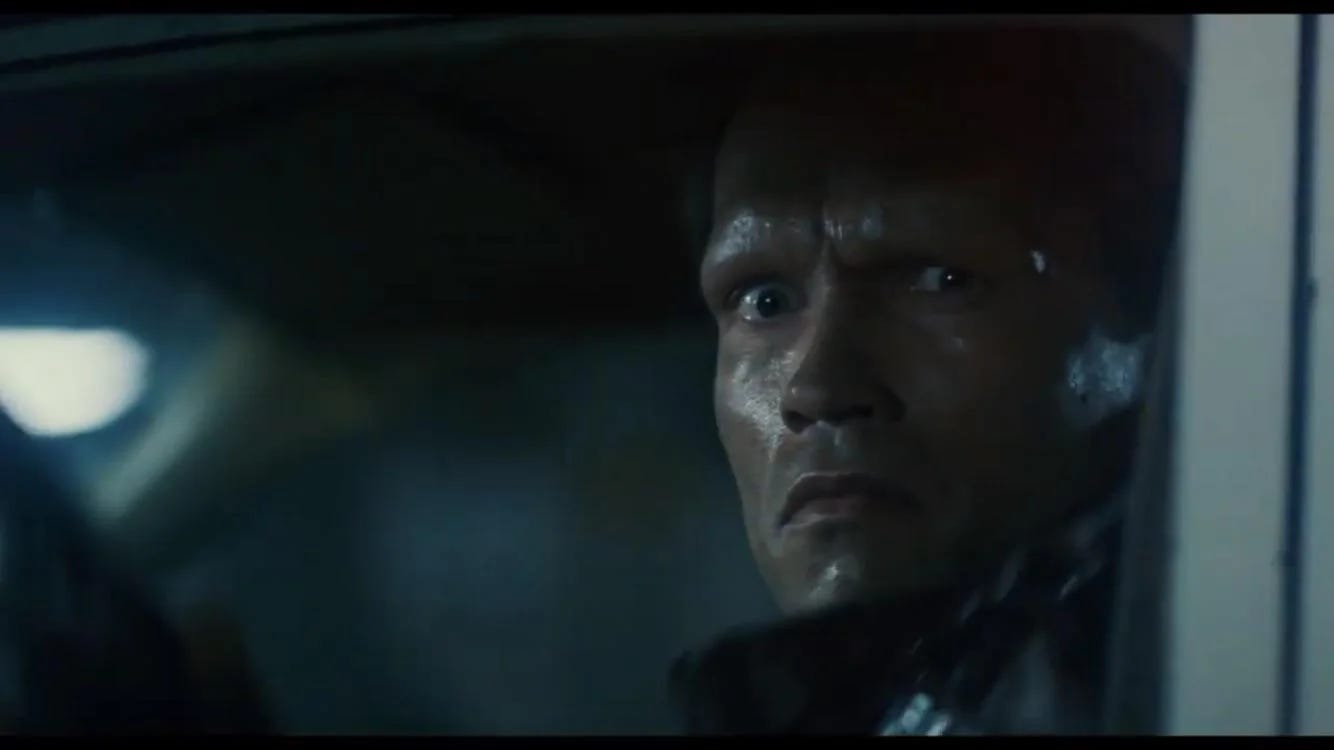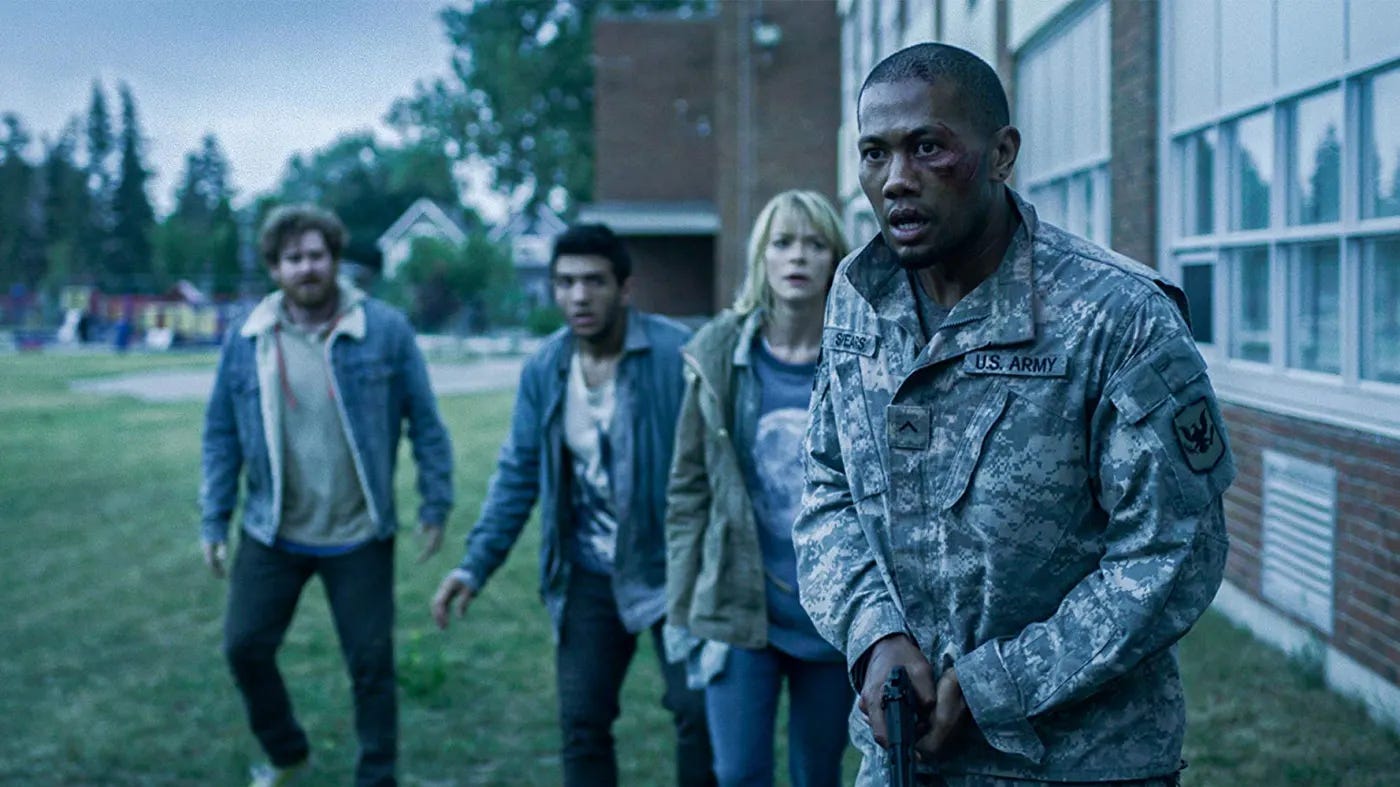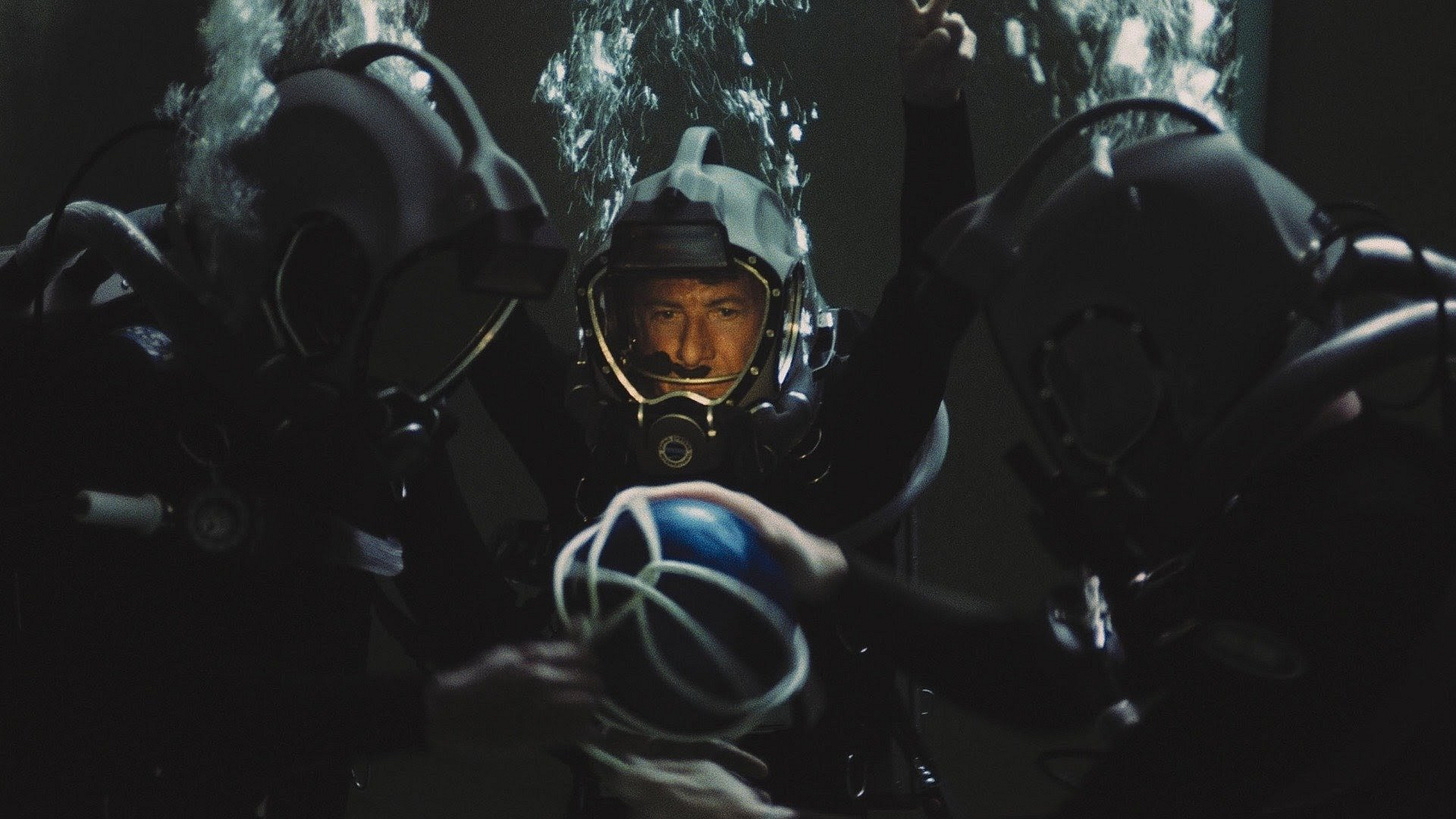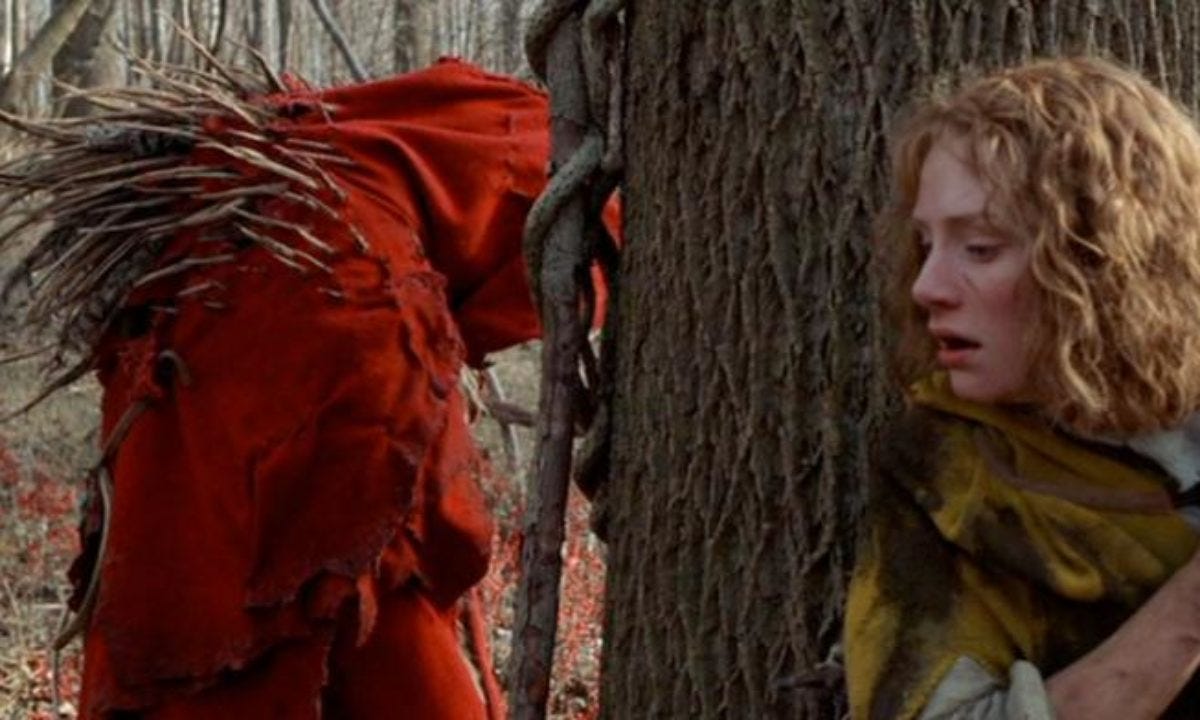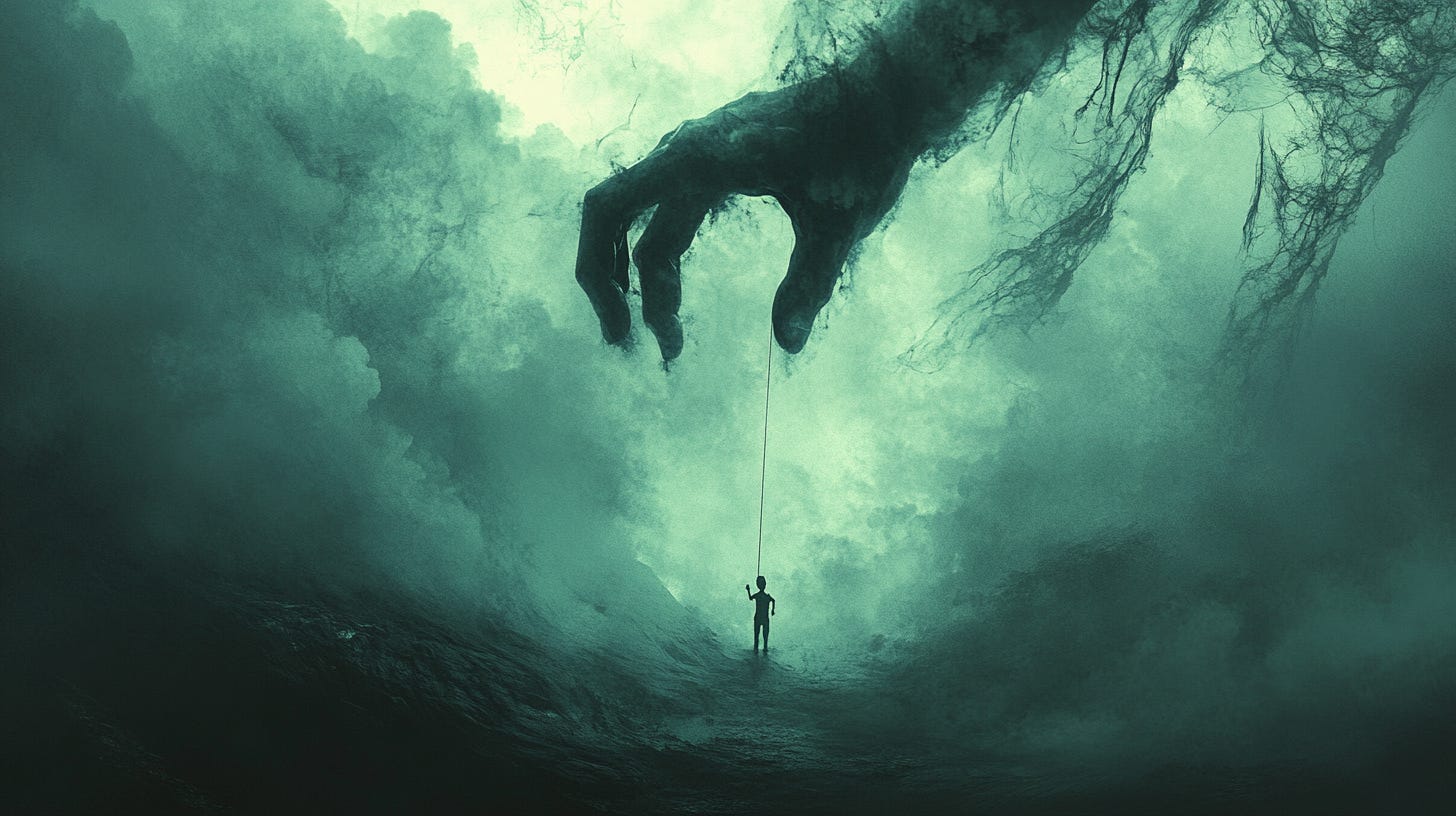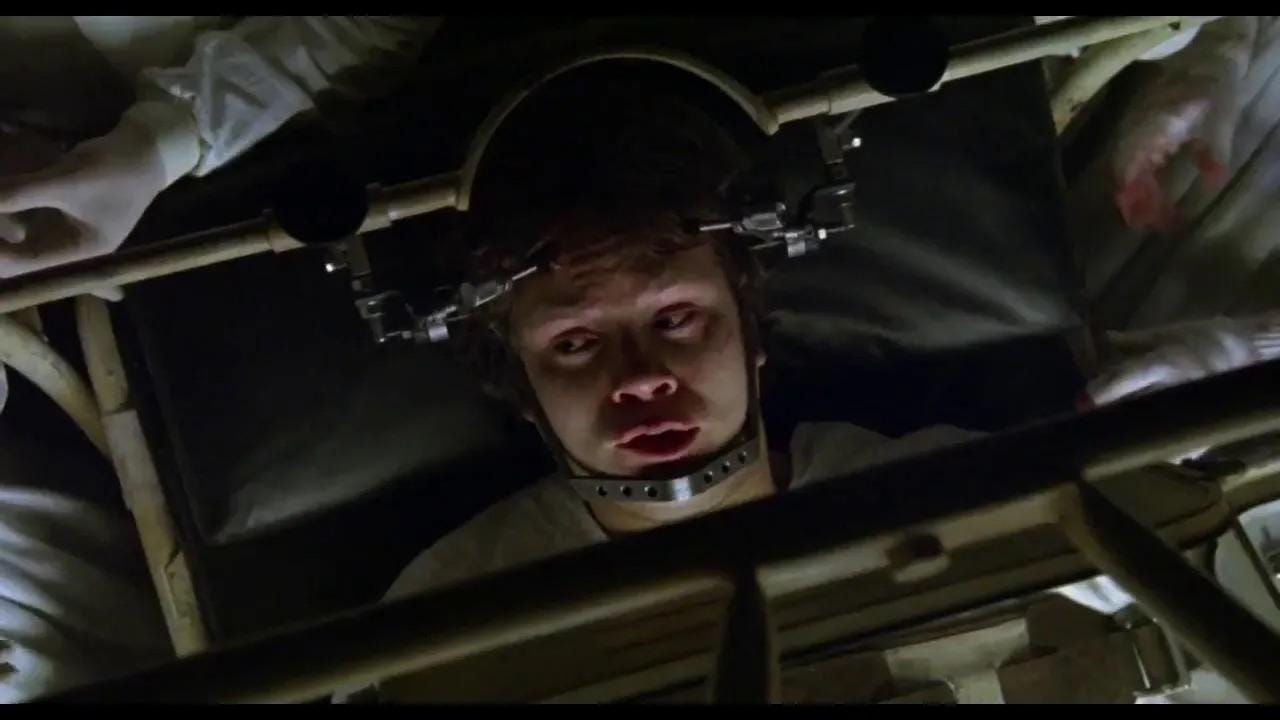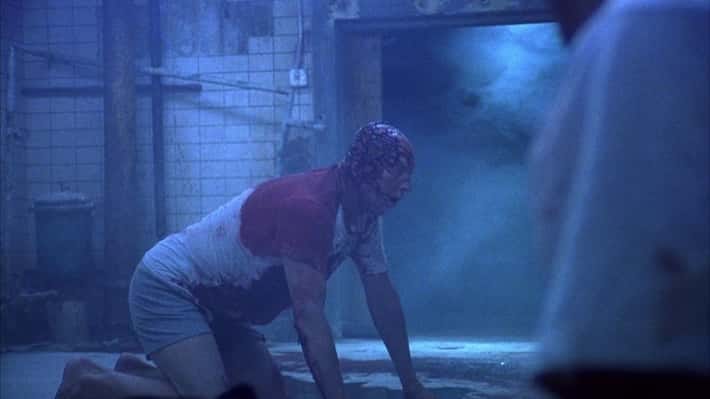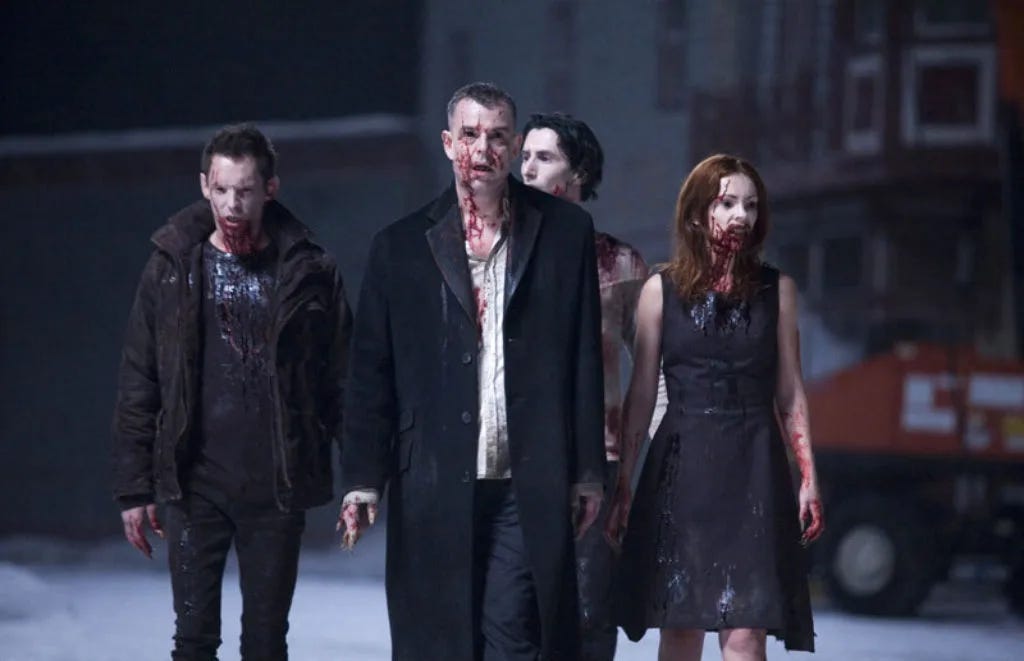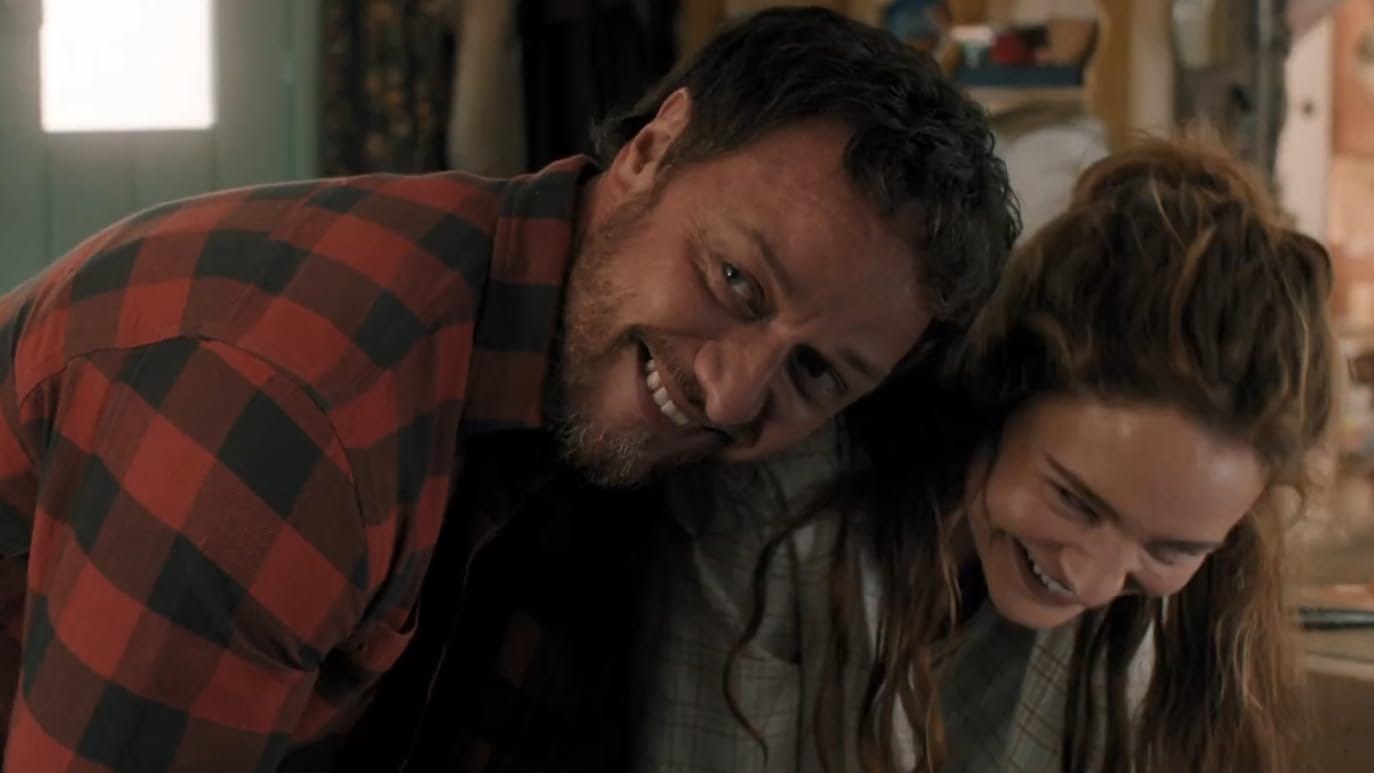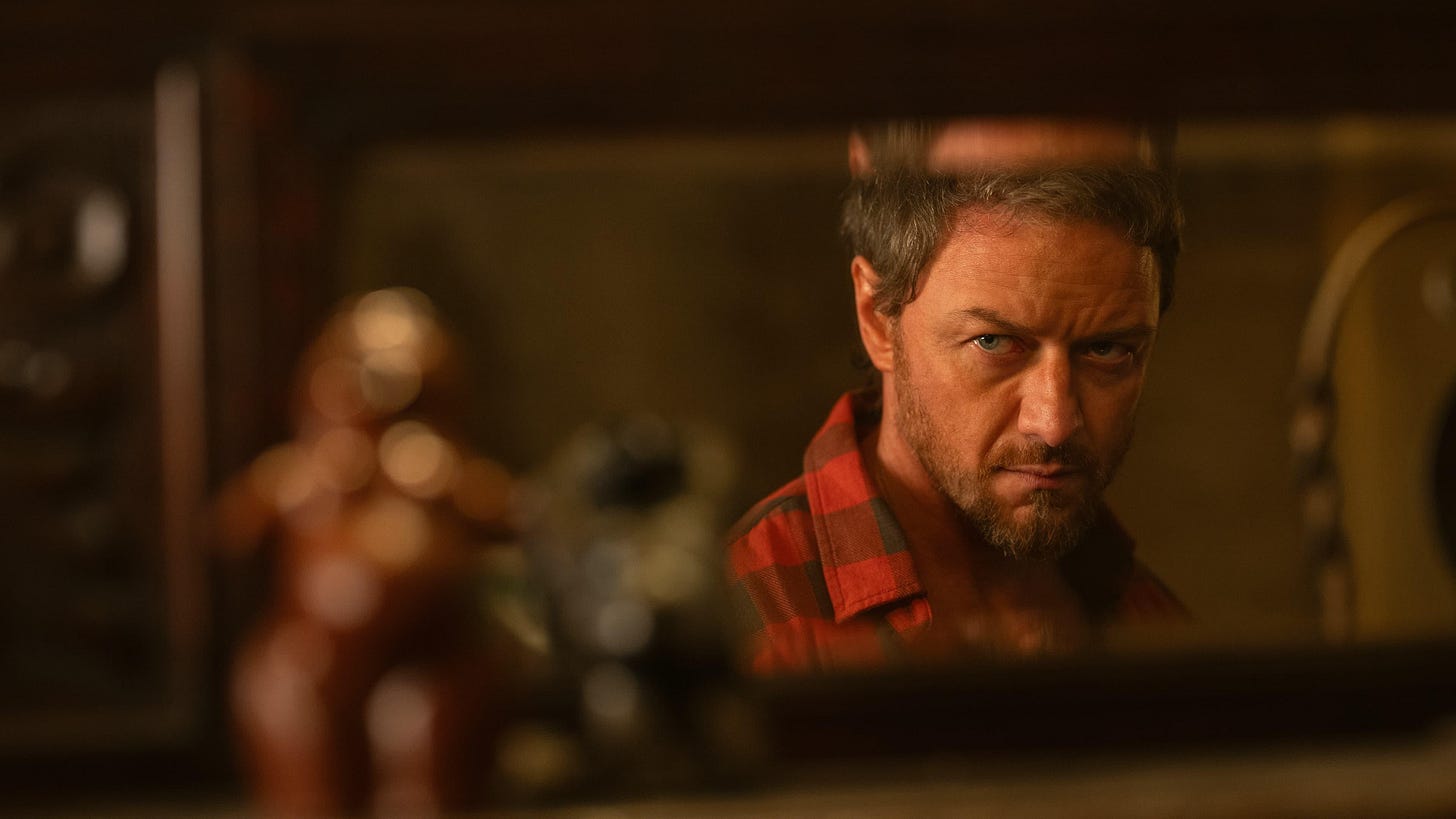Beyond the Shadow of Fear
Utilizing Human Psychology to Enhance the Horror Elements in Your Stories
One silver lining to this chaos in 2025 is that we no longer need to watch horror movies because the World around us is scary enough. That was a bad joke. I love horror movies. I’ll never stop watching them no matter how terrible everything gets. And trust me, there’s every reason to believe the World is going south.
We have AI that’s proven to be capable of lying in attempts to save itself, a radical new presidency with a lot of question marks around it, mysterious silent drones scouring America, a possible move from Al Qaeda to commit another 9/11 in America, a faltering economy, Russia invading Ukraine, Iran going to war with Israel, China getting ready to take Taiwan, demographic collapse, rising cancer rates, climate change, incels shooting up schools, fires engulfing L.A. What else did I miss?
For everyone, this is tragic, to put it lightly. But for screenwriters, this has never been a better time to tell a story that will scare the shit out of people because there’s so much inspiration everywhere you look. Now the film industry is frozen with its cautious “wait and see” policy since there’s all these changes happening at revolutionary speed. So maybe, at this moment, you won’t get paid for it. But, as the old saying goes, “This too shall pass.” Plus, you’re a writer. Since when did the economy stop you from doing what you do best?
Okay, we’re walking hand-in-hand toward our fatal demise. Everyone’s going crazy while you’re still holed up in your room with a story that will frighten people. But it’s missing that extra bit to make it pop. Where do you go from here? How do you enhance those horrifying moments? Well, you could sprinkle in a bunch of pop-up scenes, maybe add a SMASH CUT intro and a creepy score.
Kidding. That’s just “salad dressing”, at best. To make the “salad”, we gotta do a deep dive into some techniques by examining a few good old-fashioned horror movies, made by the pros to traumatize everyone. But before we do that…
What is Fear and Why?
Fear is like that friend who shows up at a party uninvited but ends up being the life of the night, which uhh… isn’t pleasant. But it’s actually a good thing. Psychologically speaking, fear is a complex cocktail of emotions and responses designed to protect us. It's our brain’s way of warding off danger, which is why it kicks into high gear when we sense a threat.
Studies reveal that fear can be split into two main categories: instinctual and learned fears. Instinctual fears are like our biological safety net. We're talking about things like heights or the dark—those primal fears that make our hearts race. On the other hand, learned fears are shaped by our personal experiences and the environment we grow up in. For instance, if you were bitten by a dog as a child, that experience could create a deep-seated fear of dogs that feels very real, even if it isn't entirely rational.
More interesting is a study published in Scientific Reports, which suggests that vicarious experiences—like witnessing someone else’s traumatic incident in a movie—can also lead to developing learned fears. So, you might be sitting on your couch, but your brain is still picking up on that anxiety and storing it away for later. That’s pretty convenient for writers.
So, how can we use fear to amplify them in our stories? There are many ways, but from watching thousands of movies throughout my life, I’ve found a few common tricks professionals exploit. If you pay close enough attention when watching them, you’ll see these techniques, clear as day…Or, you know, you could just read the rest of this blog and forget about the movies. That is an option… just saying.
The Uncanny Valley
Have you ever watched a horror movie where everything is seemingly normal, but at the same time, something just doesn’t sit right? That’s the uncanny valley effect kicking in. This phenomenon occurs when something is almost normal but misses the mark just enough to make us uncomfortable. The classic example is from Arnold Schwarzenegger’s character in Terminator–a seemingly human-like robot with the basics down but still has that creepy, soulless stare.
The human brain is wired to pick up on familiar patterns, which means seeing something so close, yet off, will throw us into discomfort. Our instincts are screaming at us that this isn’t safe, which triggers a whole cascade of unease. And it’s not just about the uncanny appearance. It’s also about what it represents.
The uncanny valley digs deep into the existential fears surrounding identity and mortality. It makes us confront the possibility of machines, beings, or otherworldly things that can mimic what we are most familiar with, masking reality and even our sense of self. That’s a heavy thought to weigh you down and why the uncanny valley technique is such a powerful tool in horror.
One of the best examples is from the film Mimic. In this movie, genetically modified cockroaches, designed to eradicate a deadly disease, evolve into creatures that mimic humans to survive. The visuals of these creatures are deeply unsettling. They possess some human-like traits, but their unnatural movements and grotesque features create a dissonance that taps into our instinctive fear.
This technique isn’t limited to human-like features, though. For instance in, The Fourth Kind a psychologist discovers unsettling truths about alien abductions in Nome, Alaska. At one point, she does hypnotherapy on a patient who describes an owl outside his window. After staring at it for a long moment, he suddenly shudders, “That’s not an owl.”, before completely flipping out. Spoiler alert. It’s not an owl. It’s aliens supplanting memories of an owl to cover up the unspeakable things they did after abducting him.
The almost alien-like portrayal of the owl, paired with the eerie atmosphere, creates a lingering sense of dread. This moment really taps into the uncanny valley effect, taking something familiar—a common bird—and twisting it into an object of fear, hinting that what looks innocent can actually conceal some terrifying secrets.
So, by crafting characters, creatures, or spaces that play with our expectations, you can heighten your viewers' uneasiness. This taps into our instinctual feelings of safety and familiarity, turning them against us.
Isolation and Vulnerability
One of the most profound fears in storytelling is isolation and vulnerability. This resonates deeply with many of us since we’re social creatures, and being utterly alone is very depressing and unpleasant. So, it’s even more unsettling when we’re surrounded by people but still feel alone. See, isolation isn’t always about being physically away from everyone. It can often mean the emotional disconnection that people experience, forcing them to confront their inner fears about themselves. When stripped of our support systems even when we exist in proximity of others, it can lead to a nasty revelation of our true selves, whether real or not.
And this isn’t just imaginary. Research has shown that individuals who experience emotional disconnection, even in the presence of others, can suffer from a range of psychological issues, including anxiety, depression, and a diminished sense of self-worth. That’s because people’s perceptions of themselves change when they feel the overwhelming “evidence” from their lack of interactions, which suggests they’re worth less than they are. Loneliness plagues the mind when a person's social relationships fail to meet their emotional needs, leading to feelings of emptiness and despair.
A striking example of this in cinema is the Netflix show Black Summer, an intense and intimate zombie horror. Most notable is the portrayal of how quickly people can become physically and emotionally isolated. Characters are often separated from their families and friends, and the relentless chaos of their environment leaves little room for connection. One minute, you’re allies. The next, you’re mortal enemies.
This heightens the tension while evoking a sense of empathy in viewers as they witness the characters’ struggles to maintain their humanity in a world that has taken it away.
Another great example is the late 90’s movie, Sphere, where isolation and vulnerability play a pivotal role in amplifying the film's scare factor. The story places a group of scientists on a deep-sea mission to investigate a mysterious spacecraft, immediately immersing them in a claustrophobic and oppressive environment. This confinement creates physical tension and heightens their emotional struggles throughout the movie.
As they delve into the mystery of the craft and this strange sphere inside, their vulnerabilities come to the forefront. The characters confront their darkest fears, and the Sphere reflects their anxieties on them, leading them towards terror and paranoia, which pushes them to isolate themselves from each other. This further erodes trust in the group, leading to an increasing sense of danger.
The movie brilliantly illustrates that the most terrifying threats can come from within, as the characters wrestle with external forces and the internal forces from their minds. This effective use of isolation and vulnerability strikes at the heart of the idea that fear can lurk in the darkest corners of our psyche. So yeah. It’s a great strategy for writing horror.
Fear of the Unknown
Imagine standing at the edge of a foggy abyss, where you can’t see what lies beyond, but you feel an unsettling presence. This is the essence of the fear of the unknown—it's not just about what we can't see, but more about what we can’t comprehend. This fear becomes a potent narrative device, especially when the real horror is not the monster lurking in the shadows but the dire consequences of its existence.
We’re hard-wired for closure and understanding, so when we can’t see the physical threat or understand why or how it’s happening…Well, that freaks us out. Just think back to what it was like dealing with Covid 19 in 2020. Even with all the data gathered to tell us everything about the virus, it was still scary because we couldn’t see it and never knew when or if it would affect us. Furthermore, there was never any closure as to where it came from or if anyone or group was responsible. Then there’s the disentanglement it brought to our global order, leaving all of us feeling uneasy. It’s the same with other stories that we read about such as all those UFO cases, Epstein’s death, the recent drone activities, or the Havana Syndrome cases that popped up at a U.S. Embassy in Cuba.
By withholding the “monster” from view, psychological terror is accentuated because it allows people’s imagination to conjure scenarios far more terrifying than the truth, let alone anything that could be shown on screen, which is why it’s often employed in cinema. Take The Village, for instance. Granted, it wasn’t M. Night’s best work as you could clearly see the plot twist in the previews. But it’s a great example of “withholding the monster”.
This is about a small egalitarian community whose fears center around these mysterious creatures that roam the woods. What's scary isn’t the monsters themselves (who don’t even exist), but the consequences of “encountering them”. The villagers are constantly anxious, enforcing strict boundaries to protect themselves from unseen threats. The looming fear of what could happen drives their actions and shapes their lives, creating a suffocating atmosphere of paranoia and control. The repercussions of their fears lead to isolation and distorted reality, illustrating how the unknown can dictate behavior and breed mistrust.
A more grotesque example can be found in the animated movie, Dead Space, where the characters navigate a space station overrun by people who transformed into creatures, known as Necromorphs, from an unknown cause. The monsters are horrifying, but what’s scarier is the result of the outbreak—the haunting isolation, the psychological torment of not understanding how it causes random people to transform, and the sense of helplessness that permeates the environment.
Additionally, throughout the story, the characters are constantly reminded of the consequences of what happened before showing up, as they unravel the dark history of the station and witness the remnants of those who fell victim to the unknown. This amplifies the anxiety as they navigate the dark corridors and fight for safety.
So incorporating the fear of the unknown by focusing on the consequences rather than the monsters themselves invites readers to confront their fear of unknown danger, making the experience deeply personal and profoundly unsettling. When the true nature of the threat is obscured, the mind fills in the gaps, conjuring up scenarios that can be far more frightening than any visual representation. It’s the fear of what might happen—the loss of control, the unraveling of reality, and the potential for unimaginable suffering—that keeps audiences on edge as they ponder the idea that a monster may be lurking around that they just can’t see.
Psychological Manipulation
When it comes to enhancing fear in storytelling, psychological manipulation is like the puppet master pulling the strings behind the scenes. It’s the subtle art of using characters' minds and emotions to create an atmosphere of terror. Psychological manipulation is scary, both in real life and on-screen, because it directly threatens our sense of control and perception of reality. We feel exposed and powerless when someone can twist our thoughts or emotions. This fear is rooted in our desire to believe that we’re making rational, informed choices. But when manipulation enters the picture, it shakes that confidence. We start to question what’s real and what’s been distorted, and that uncertainty can be very unnerving.
A masterclass in this can be found in the film Jacob's Ladder, which was the movie that inspired the visuals in Silent Hill, arguably one of the scariest games to have ever existed. The protagonist, Jacob, grapples with disorienting hallucinations and flashbacks that blur the lines between reality and delusion. As viewers, we’re drawn into his fragmented mind, experiencing his confusion and terror as he struggles with his sanity. The film expertly crafts an unsettling atmosphere where the horror stems, not from external threats but from the internal demons he battles.
It’s revealed that Jacob is trapped in a coma after a horrific battle in Vietnam, which he barely survived. This manipulation of perception amplifies the fear, thrusting audiences into a state of anxiety as they grapple with what is real versus what is a product of Jacob's tortured psyche. The cognitive dissonance arises as viewers are forced to reconcile the horror of Jacob's experiences with the unsettling reality of his condition, creating a deeply immersive and disorienting experience.
Another stellar example is Saw, which introduces us to the twisted world of Jigsaw, a villain who places his victims in horrifying life-or-death situations designed to test their will to live. The psychological manipulation in this movie is profound; each trap forces the characters to confront their flaws and past mistakes, often leading to moral dilemmas that challenge their humanity.
For instance, in the film, we see Adam and Lawrence, two men trapped in a grimy bathroom, chained to the wall. Jigsaw's test is not just about escaping but about understanding the value of life. Lawrence can save himself by killing Adam, who is revealed to be just as flawed as Lawrence. This situation evokes a psychological struggle that digs deep into the characters' psyches, forcing them to grapple with their fears of survival and morality. The tension escalates as each character is pushed to their limits, revealing their vulnerabilities and the darker sides of human nature.
The film's climax and twist at the end come after a tense series of events unfold where Lawrence manages to escape his chains by cutting off his foot, only to discover that the key to his freedom was hidden in the very room where he was held captive. Meanwhile, Adam, who has been left behind, becomes increasingly desperate and realizes that all of Jigsaw's games are interconnected and designed to test the limits of human endurance. And just when it couldn’t be more shocking, it’s revealed that Jigsaw has been in the room with them the entire time, lying on the floor as a corpse. This twist flips the narrative on its head and drives home the psychological horror of being watched and manipulated without even realizing it.
Incorporating psychological manipulation into your stories allows you to play with your audience's mind, creating an emotional rollercoaster that keeps them on edge while allowing them to delve deeper into the human experience of fear. So consider employing unreliable narrators or disorienting experiences that challenge the audience's understanding of reality. This technique can evoke confusion and unease, drawing your readers into the psychological labyrinth alongside your characters. But most of all, it can remind them of the possibility that their perceptions of reality may not be as reliable as they think.
Slow Build-Up from “Normal” to “Chaos”
The last technique that I’ll cover is one of the most effective ways to elicit fear, and that’s through pacing. Gradually push the story into chaos, starting with normalcy. It’s like watching a pot of water slowly heat up until it reaches a rolling boil—this technique allows the audience to become invested in the characters and their world before plunging them into terror. By establishing a baseline of safety, you create a stark contrast that amplifies the horror when everything unravels.
A prime example of this strategy can be seen in the Netflix series Midnight Mass. It starts in this seemingly perfect community on Crockett Island, where life is predictable and routine. The locals gather for church, share meals, and go about their daily lives. But underneath that calm surface, there’s a tension that starts to build. When a mysterious priest arrives, strange occurrences begin to unfold, and an old supernatural presence—vampires—begin disrupting the island’s tranquility.
As the story progresses, you start to notice these subtle hints and creepy moments piling up, creating a growing sense of dread that seeps into every interaction. The characters’ faith is tested, relationships start to crack, and that once-safe community begins to splinter apart. This slow build-up leads to a chaotic climax that hits hard—it's not just the vampires that freak you out, but the very real psychological breakdown of the characters and their way of life.
Another great example is the recent film, Speak No Evil, which dives into the terrifying consequences of social niceties gone wrong. The movie follows an American family who hit it off with a British couple while on vacation and receive an invite to their home in the English countryside. At first, everything feels warm and friendly, creating a sense of camaraderie and trust. But as the story unfolds, those light-hearted moments shift into something much more uncomfortable. The British couple’s charming home begins to take on a creepy vibe that seeps into the atmosphere, making you realize that not everything is as it seems.
The slow build-up of tension is punctuated by increasingly unsettling moments. The male host, Paddy, played by James McAvoy, begins to appear more controlling and erratic, slipping in inappropriate jokes that unsettle the American family. He pushes social boundaries, testing just how far politeness can go. Things take a turn during a dinner scene when Paddy insists on discussing taboo subjects and manipulates the social atmosphere, ramping up this sense of impending danger. The American family slowly becomes aware that something is seriously off.
As the story unfolds, tension builds. Paddy’s increasingly bizarre demands and erratic behavior push the American family to confront their discomfort head-on. They struggle between wanting to be polite and the undeniable realization that they’re in a dangerous situation. It’s a tightrope walk of social niceties against an escalating unease.
The film’s climax hits with a shocking and horrific twist that reveals the true nature of the British couple. That slow build-up from normalcy to chaos really drives home the horror of social complacency and what can happen when you ignore the warning signs. In the end, the film leaves you with a lingering sense of unease, highlighting the dangers that can lurk beneath the surface of what seems like ordinary interactions. It’s a reminder that the most unsettling threats can come from the people we least suspect.
The slow build-up from normalcy to chaos is one of the most effective ways to create fear in storytelling. It allows the audience to connect with the characters and their everyday lives before throwing them into the deep end of terror. Movies or shows like Midnight Mass and Speak No Evil start with a sense of safety and familiarity, which makes the eventual chaos hit that much harder. These stories show us that the real horror often lurks around the corner of our daily routines and interactions.
Conclusion
So there you have it. Whether you’re tapping into the uncanny valley effect, isolating your characters to strip them of their defenses, utilizing psychological manipulation, playing with the fear of the unknown, or gradually building up from “normal” to “chaos”, all of these techniques offer a unique opportunity to engage your audience in ways that linger long after the credits roll.
Remember, fear isn’t just about jump scares or grotesque imagery; it’s about creating a connection with your audience that resonates on a deeper psychological level. It’s about tapping into those primal instincts and learned fears that make us human, drawing out our vulnerabilities, and making us confront the darker aspects of existence. As writers, we have the power to evoke such raw emotions, and now, with a better understanding of these fear elements, you’re equipped to take your storytelling to new heights.
So, as the World burns around you from all sorts of frightening things while you craft your next story to torture your audience (in a good way), don’t hesitate to lean into the discomfort. Embrace the chaos, and remember that the real horrors are a reflection of awful truths we pretend aren’t real, concealed beneath the normalcy of our lives, eager to burst forth at any moment.
Anywho, thank you for reading this. Hope it was insightful, and as always, best of luck in your creative endeavors!
__________________________________________
Story Prism,





